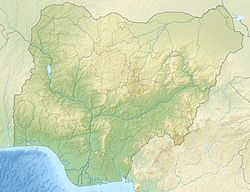Role of Emotan
One prominent figure associated with Oba Market is Emotan, also known as Uwarraye. [6] In the 15th century, during the reigns of Oba Uwaifiokun and Oba Ewuare the Great, Emotan was a respected market woman celebrated for her humanitarian work and dedication to children. [7] [8] Importantly, she played a key role during Prince Ogun's (Oba Ewuare I) quest to reclaim his throne after a period of exile. [9] [8]
Emotan and Prince Ogun conspired to overthrow the usurper, Oba Uwaifiokun. Emotan's astuteness played a crucial role in Prince Ogun's successful return to the throne. [8] [10] She provided sanctuary for him within her modest dwelling in Oba Market, becoming his trusted informant as Uwaifiokun sought to eliminate him to retain power. [11] [8]
Upon Emotan's passing, Oba Ewuare the Great decreed that she should be forever remembered. [12] To honor this decree, he deified her by planting a sacred Uruhe tree at her resting place, which was the same location where she had resided adjacent to Oba Market. [13] [14]
